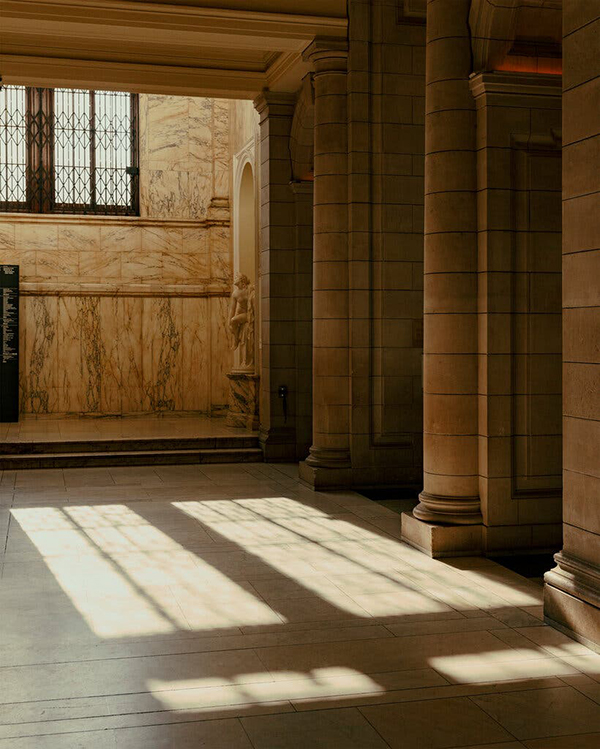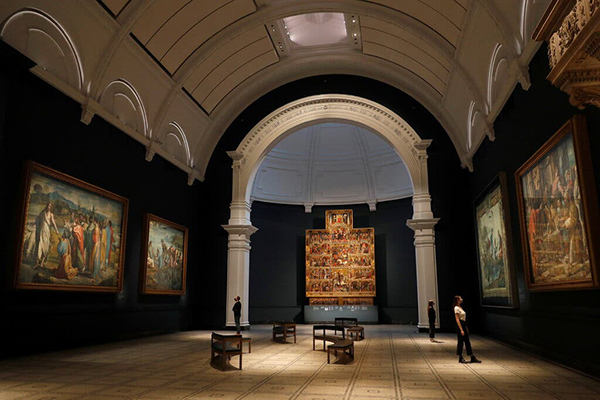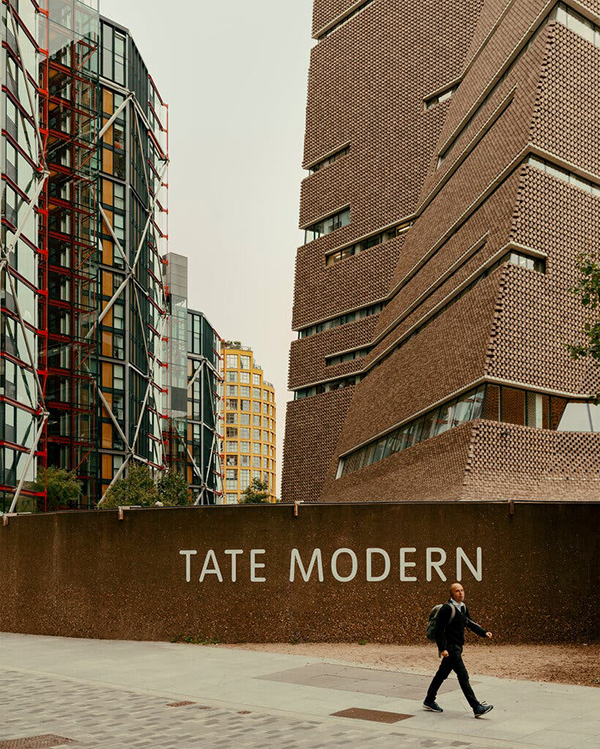Alex Marshall, British Museums Face Covid’s Long-Term Effects, The New York Times, 14 October 2021
Months of closures during the pandemic have caused financial havoc for art venues, and many expect to be strapped for years. At the Victoria and Albert Museum in London, the virus’s impact is clear.
LONDON — The Victoria & Albert Museum in London has one of Britain’s most eccentric collections of treasures.
In one room of the decorative and applied arts museum sits the Great Bed of Ware, a 10-foot-wide four-poster bed that was such a popular tourist attraction in 16th-century England that William Shakespeare mentioned it in “Twelfth Night.” A short walk away, a pair of Nike running shoes are on display.
But during several recent visits to the V&A, as the museum is known, some of the eclectic displays were off limits. On a Sunday in September, a small sign at the entrance announced that its British galleries were closed. So were the furniture exhibits. And so was much of the ceramics collection.
The sign didn’t offer any explanation, but a museum assistant said that because the museum laid off employees in a post-lockdown belt tightening, galleries were often shut.
“It’s best to call ahead if you want to see something,” she said.

More than 18 months since the coronavirus pandemic hit Britain, its long-term effects on the country’s museums are becoming clear. Months of closures have caused havoc with their finances, and as a consequence, many museums expect to be strapped for years.
Britain’s government handed out billions in financial support while arts venues were forced to shutter. Yet, for many venues, it has not been enough to fill the gap from lost exhibition, gift store and catering income. The V&A lost almost 53 million pounds, or about $73 million, in the year after the pandemic hit.
Since May, museums in England have been allowed to open without restrictions, and visitors have returned — although attendance at many is not even half prepandemic levels.
“We’re still seeing the impact of the pandemic play out,” said Sharon Heal, the director of the Museums Association, a trade body. “It’s not back to normal at all.”
According to research by the association, almost 4,700 staff members have been laid off across Britain’s museum sector since the pandemic began. The Brontë Parsonage Museum, in the house where the author sisters lived, lost 12 employees over the past year. The Royal Collection Trust, which administers the queen’s art collection, lost 165, including the surveyor of the queen’s pictures, a role that dates back to 1625. Last year, extensive job cuts at the Tate museum group’s retail and catering arm led to protests outside Tate Modern.
But it is at the Victoria and Albert Museum that the pandemic’s lingering effects seem most apparent.

Last August, Tristram Hunt, the V&A’s director, began putting in place a plan to save about £10 million, or about $13.7 million, each year. He asked the museum’s departments to plan for budget cuts of up to 20 percent. He also proposed that the museum’s curatorial and research departments be rearranged so that they would no longer be organized by material, like glass or metal. Instead, they should be organized by historical era.
The plan did not go over well when it became public knowledge in February. A union representing some of the museum’s employees started an online petition against the planned changes to the National Art Library, housed in the V&A; a France-based organization representing performing arts museums started another. Academics denounced the proposals in newspaper opinion essays and in art publications. Christina J. Faraday, an art historian, wrote in The Daily Telegraph that the plans struck at the heart of the museum’s identity.
“Tristram Hunt is in danger of becoming the director who found the V&A marble and left it brick,” she said.
Within weeks, Hunt dropped the plan. Through a spokeswoman, he declined several interview requests for this article, but in August he told The Daily Telegraph that he “could see the force of their argument.” The museum has still cut department budgets by 10 to 12 percent and continues to limit the days that it is open to five a week, as opposed to seven before the pandemic.
Even after those cutbacks, the museum often does not have enough staff members to open all of its galleries. Of the 166 assistants who guarded the collection before March 2020, only 93 now remain. Steven Warwick, a representative for the Public and Commercial Services Union, which represents many museum staff members, said assistants now must patrol double the floor space and are finding it difficult to stop visitors from “interfering with the objects.”
Cuts to other departments at the V&A, like the education and conservation teams, will potentially have longer-term effects, according to three former staff members.
Tessa Murdoch, the museum’s former keeper of sculpture, metalwork, ceramics and glass, said the loss of expertise in curatorial teams might damage the quality of the museum’s exhibit labeling and its ability to process loans. Eric Turner, a former curator of metalwork, said the museum’s curators and conservation workers would be under more pressure to produce more during the same working hours.
In an email to The New York Times, Phoebe Moore, a V&A spokeswoman, said “no area” of the museum’s curatorial work was at risk. “We don’t anticipate any impact on the care of the collections,” she said, adding that some galleries were closed because of “unexpected levels of sickness and absence, not a result of the restructure.”
“We expect to be back to normal very soon,” Moore added.

Several other major British museums, including Tate, have said that they will now present fewer temporary exhibitions each year to keep costs down and give visitors more time to see shows. Moore said that the V&A was still working out its post-pandemic exhibition plan, but that its 2022 shows, which include a major exhibition on African fashion, would go ahead as originally planned.
At the museum on a recent Sunday, a handful of visitors said they felt strongly that all of the V&A’s galleries should remain open. “I feel like England’s moved out from the pandemic,” said Sofia Viola, 17.
But many others said it seemed the V&A was trying its best. Farhat Khan, 58, who was touring the museum with her grandson, said that while she missed seeing certain objects, the gallery closures didn’t bother her. “Of course it was annoying,” she said, “but we’ve got to support everyone.”
Adam Mellor, 43, standing in front of the Great Bed of Ware with his family, expressed a similar sentiment. “I’d rather come here and have the museum half open than have it shut,” he said, right before he encountered a blocked barrier, barring him from viewing more galleries upstairs.
“Oh, that’s a shame,” he said. “It’s really cool up there,” he added with a sigh, as he led his children in the opposite direction.

